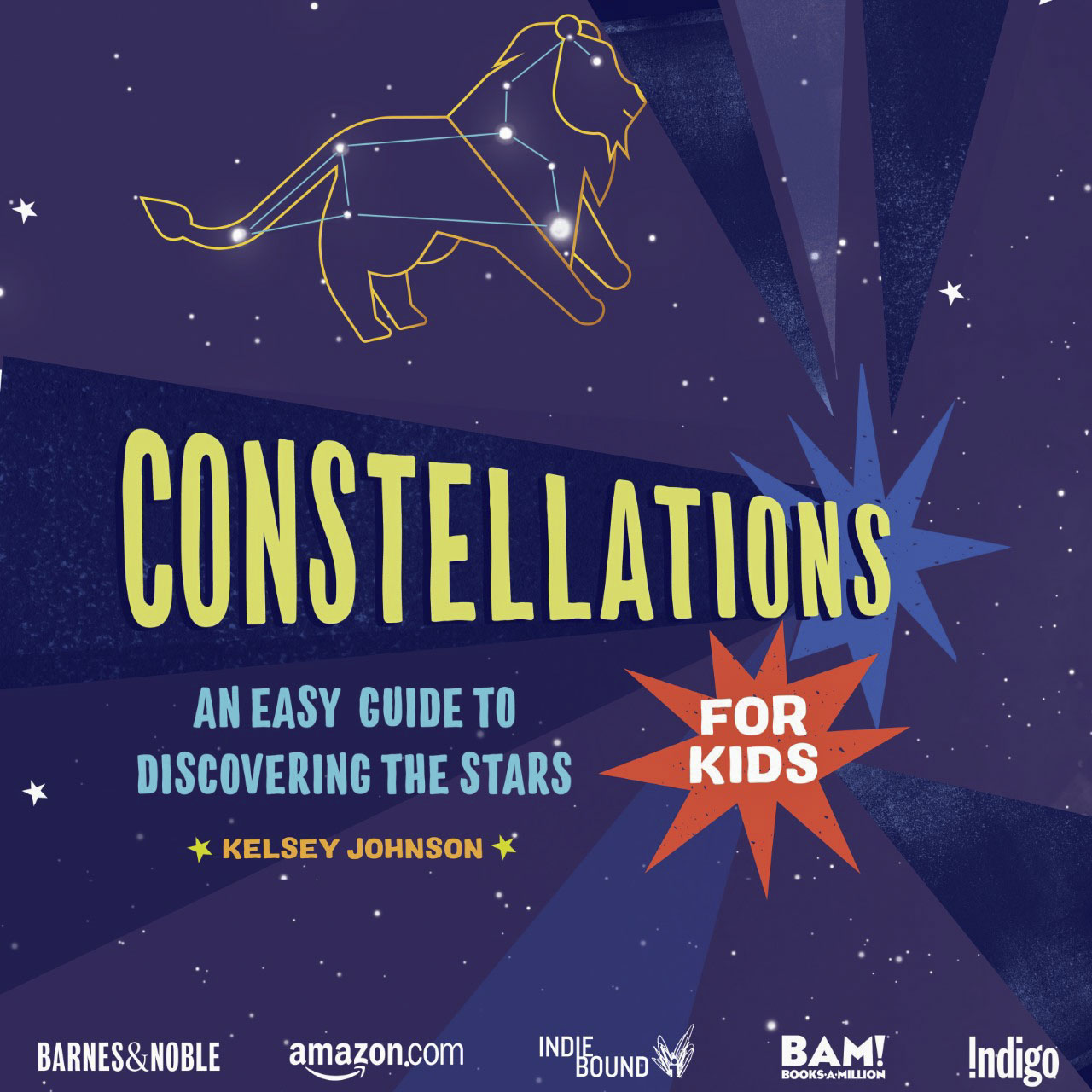University of Virginia astronomy professor Kelsey Johnson has devoted her career to studying the universe, and to introducing students to its wonders. Now, she has written a book for children, “Constellations for Kids: An Easy Guide to Discovering the Stars.”
“I want to help get kids looking at the night sky and experiencing the wonder that comes with it,” Johnson, a mother of three, said. “We can all use a little more science literacy in our lives right now, and this might be helpful for parents looking at homeschooling their kids this fall.”
The book, written for children at the 6- to 9-year-old reading level, was published this week by Rockridge, an imprint of Callisto Media, and is available from online booksellers. The cheerfully illustrated book features 20 constellations, from Canis Major to Cassiopeia, with sky maps for finding and identifying them. Johnson also provides a reader-friendly, G-rated introduction to the mythology behind the constellations.
This is Johnson’s second children’s book. Her first, “Snapshots of the Universe,” was published 10 years ago and illustrated by UVA Spanish alumna Laura Jackson. That book is available as a PDF on the website of Dark Skies, Bright Kids, a public outreach program developed and run for elementary school students in Virginia by Johnson and her UVA students.

Kelsey Johnson’s book introduces children to the night sky. (Contributed photo)
Here, Johnson talks about her latest effort.
Q. What inspired you to write “Constellations for Kids”?
A. I want to help get kids and their families looking at the night sky and having moments of wonder and awe. For me, spending time looking at the stars is both a respite and an important reminder that we are part of something much bigger. For the target age range of this book, 6 to 9 years old, there is a real lack of accessible material on the night sky, and I want to encourage kids as young as possible to be looking up.
I worry that as we lose the night sky to light pollution, fewer and fewer people are able to have this experience, and a huge fraction of today’s children will grow up having never seen a truly dark night sky. In the end, we risk humanity being cut off from the universe, and I hate to think how that will affect our worldviews.
Q. Who illustrated it?
A. I worked with an amazing graphic designer named Jane Archer, the art director for the publication. I fell in love with the kid-friendly graphics and illustrations that conveyed the essence of the constellations without being overly complicated.
Q. What will children, their parents and educators get from the book?
A. My hope is that this book will provide a basic introduction to the night sky with simple instructions, as well as highly abridged and age-appropriate stories behind the constellations.

Compressing full Greek stories, with the often-associated “R” ratings, to a couple hundred words appropriate for 6- to 9-year-olds was by far the biggest challenge. I also tried to give a sense of what cultures around the globe saw in the stars, which I hope will encourage kids to think about different perspectives.
My dream outcome for this book would be for the children who read it to grow up and teach the constellations and their stories to the next generation.
Q. What sparked your own interest in astronomy when you were at the age of your targeted readers?
A. The night sky! I find it impossible to look at the night sky and not be overwhelmed with wonder. What is out there? What is our place in the universe? Is there other life? Why, why, why?
For me looking at the night sky is a profound experience that gets to the core of what it is to be human. There are many paths one could take to search for insight, and for me astrophysics is a big part of my journey.
Q. Do you have a favorite constellation?
A. Yes! My favorite constellation, which I look for every time I’m outside at night, is Lyra. In fact, one of my dogs is named Lyra. Lyra was one of the first constellations I learned as a kid, and it is pretty easy to find because it has a bright star named Vega, which is also my favorite star. The stars in Lyra are shaped like a perfect little equilateral triangle connected by one corner to a perfect little parallelogram. Lyra is the only Greek constellation based on a musical instrument, the lyre.
Q. With so much going on here on Earth, why look toward the heavens?
A. My experience is that spending some quality time with the universe is a balm for the soul. The universe constantly reminds us that we are part of something bigger than ourselves – bigger than politics, bigger than the everyday. Everything is transient. Reminding myself that the universe is going to keep doing its thing, regardless of what is going on here on Earth, helps to take the edge off.
Media Contact
Article Information
September 2, 2020
/content/astronomers-new-book-leads-children-exploration-constellations

